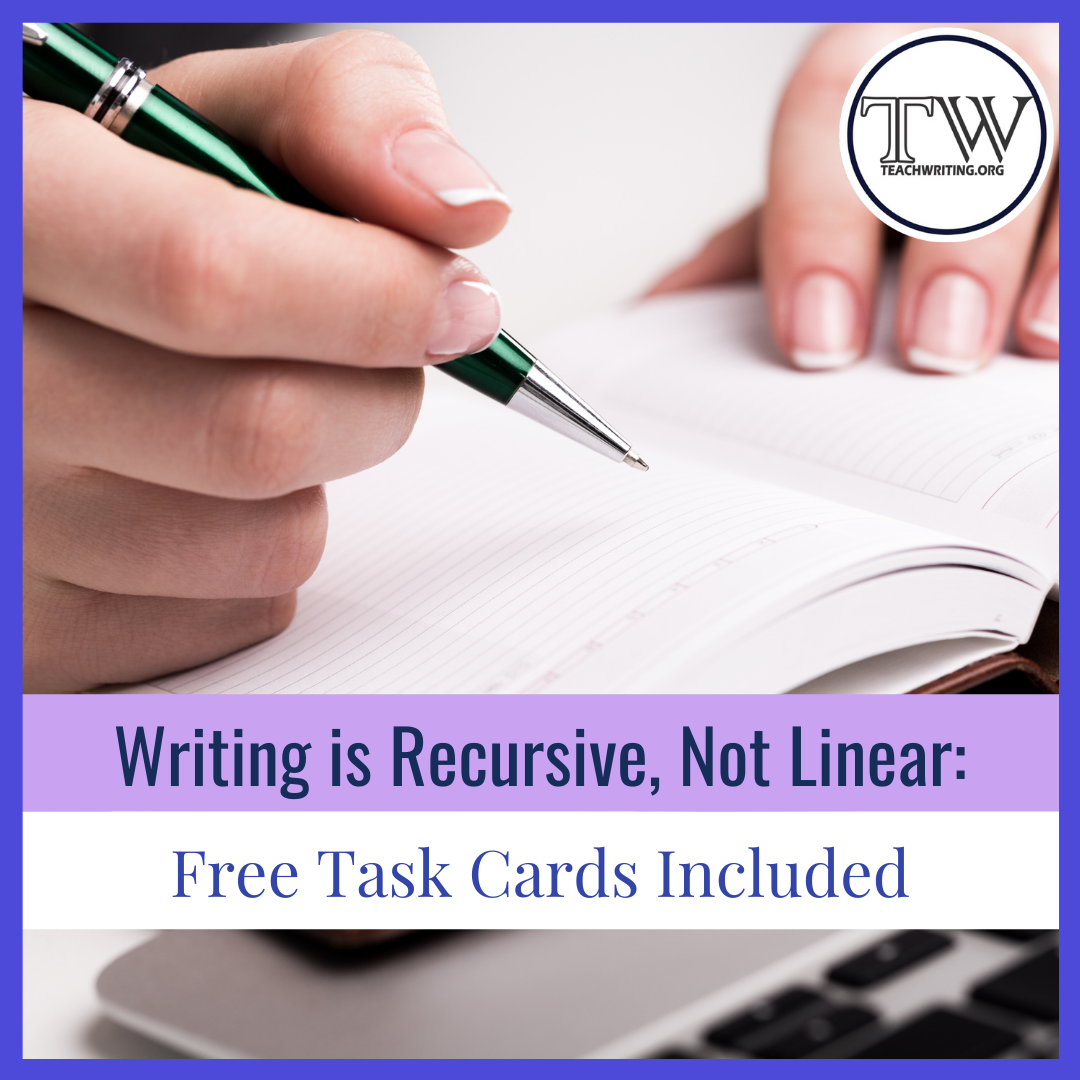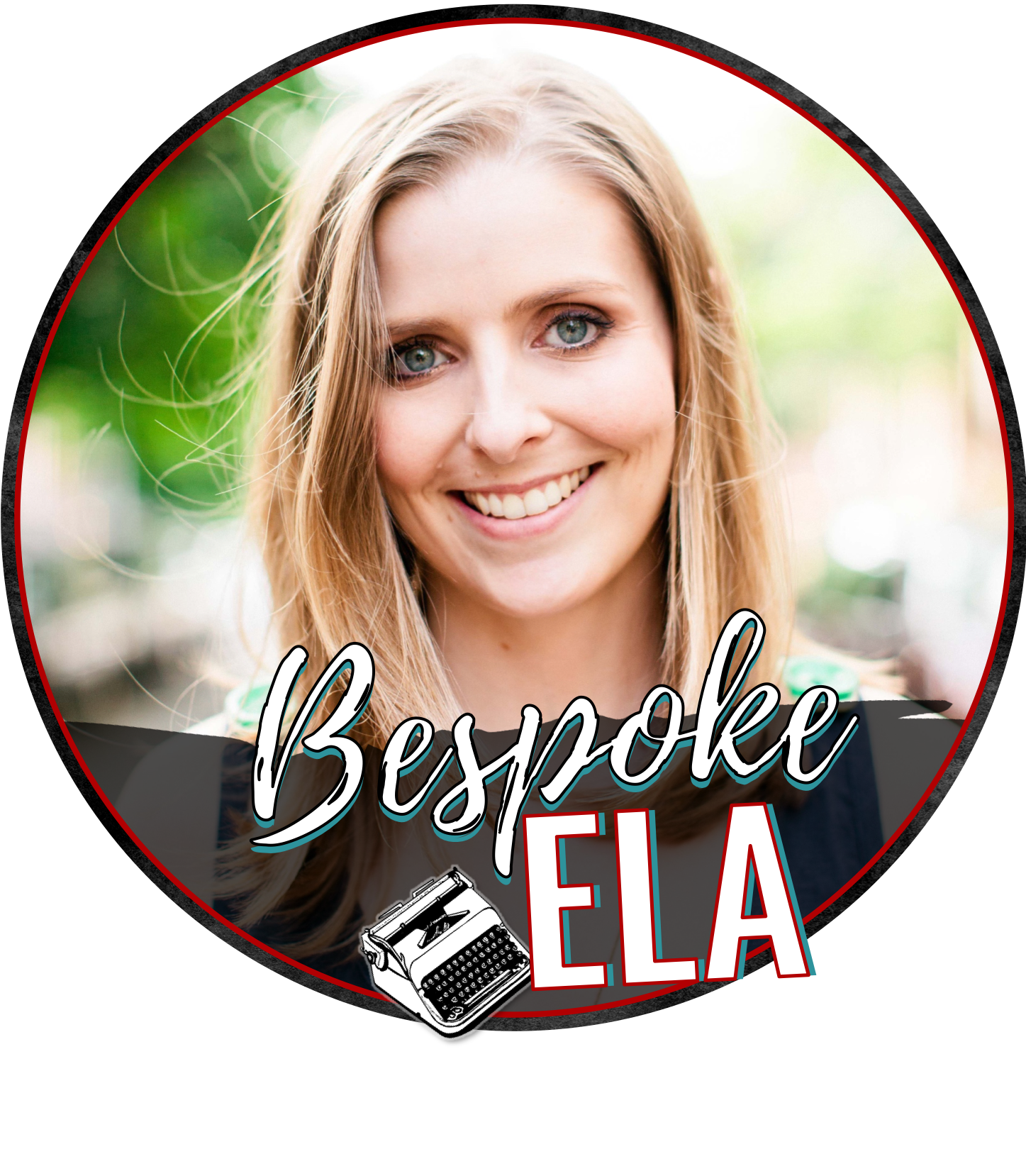Writing Workshop Resource Roundup
We know as English teachers that writing workshop is a foundational approach to writing instruction in the modern classroom. But if you’re like me, I am always searching for new tips, tools, and resources for implementing writer’s workshop— to make it more manageable for me as a teacher as well as more approachable for my students.
There is nothing more intimidating than a blank page and a writing prompt. That vacant white space can be paralyzing. But that’s where writing workshop can step in to help!
Below, I have gathered some resources for writing workshop. I hope you find something here of use to you and your students.
Writing workshop Blog Posts
Blending Quotes with TCS: A Strategy for Essay Writing Success!
Blending textual evidence into writing is a key skill for writing any academic essay. But year after year, I find that high school students still struggle with this skill, creating run-on sentences or fragments instead of complete sentences with their evidence. I also find that students can sometimes be confused about where to place the blending stem and how to smoothly transition into the quotations.
Because of this confusion, I developed a quick strategy called the “TCS Strategy for Quote Blending” to help students quickly and effectively blend evidence into essay writing. You can find more about this strategy in the Blending Quotes for ESSAY WRITING with TCS (Transition, Context, Speaker) Guide found here.
Click here to read more…
Argumentative writing is a cornerstone of writing across content areas. Essentially, all pieces of writing are an argument. A personal narrative argues a particular perspective, or theme, about life using personal life experiences. Even a how-to process essay attempts to persuade the reader that there is a particular way to do something. Then there are the more obvious essays such as persuasive and literary analysis that attempt to persuade the reader to a particular point of view. Check out the 25 Essential Handouts for Writing Workshop in Secondary ELA by Bespoke ELA for reference materials to guide editing and revision mini-lessons for writing workshop!
Click here to read more…
The commentary part of any essay is always the most difficult. It is the part of the essay in which the writer analyzes evidence, and this analysis speaks to the writer’s own unique voice. While we have standard, formulaic ways to teach other parts of the essay such as thesis statements, blending quotes, topics sentences, etc., commentary is different. There really isn’t a formula for teaching our students how to have unique thoughts. However, there are definitely strategies we can use with our students to help them practice writing commentary as well as take it to a deeper level. This is a topic that I have spent quite a bit of time on simply because it is the one skill that my students struggle with the most. You can find more posts from me on this topic here and here.
Click here to read more…
Many graphic representations of the writing process show it to be a linear process. They go something like this:
1ST- BRAINSTORM
2ND- DRAFT
3RD- REVISE
4TH- EDIT
5TH- PUBLISH
The reality is that writing is NOT a linear process for everyone... or maybe anyone. Writing goes all ways: forwards, backwards, sideways, over there, and over here. In fact, the only piece of the writing process that occurs at a set point in time is publishing. The reality is that the writing process is recursive. Sometimes, we don't even begin with brainstorming; sometimes, we begin with drafting, or free writing. Sometimes, we don't revise before we edit; sometimes, we revise and edit at the same exact time.
When we teach the writing process in a linear sequence, students often become confused by the boundaries between the steps. Have you ever had a student ask you if it was permissible to go back and revise a thesis statement after having written a draft? The answer is OF COURSE! Not only is it okay to do that, but I encourage my students to do that. The more we write about an idea, the more focused we become in our arguments, and the thesis statement should be revised and changed accordingly.
Click here to read more…
A writer’s toolkit is a resource for students to use as a reference guide during writing workshop. A writer’s toolkit can take the form of a digital folder or even physical folder. Both options can work for students depending upon the needs of your students— or your individual preference.
Here are the basic steps for building a writer’s toolkit for students to use during writing workshop throughout the school year.
Click here to read more…
Writer’s block is real. It can be the brick wall that stands between success and failure. And it can be the force that prevents students from completing writing assignments. It’s important to communicate to students that ALL WRITERS suffer from writer’s block at some point—Stephen King, Sir Paul McCartney, and J.K. Rowling have all talked about it—and they are all great writers. So, what separates them from everyone else who fails to finish a piece of writing? Two things: discipline and strategies.
Click here to read more…
The term “struggling” writer really applies to every single human being. We have all struggled with writing at some point and will continue to struggle moving forward. The difference between successful writers and unsuccessful writers (“success” being defined as students who turn in completed essays that convey meaning effectively versus those who do not) lies in being able to work through frustration. This philosophy applies to all aspects of life. Those people who become successful tend to be the ones that don’t quit when they face obstacles. In essence, this is the entire concept of “grit” as proposed in Angela Duckworth’s popular book.
Click here to read more…
Writing is a process. It is recursive. No piece of writing is ever "final." Something can always be better. I often feel this way whenever I read back over my own old essays and inevitably find a sentence that could be better, a paragraph that could be stronger, or a word that could be more precise. Our very grading system forces us to assign numbered grades to writing, which assumes that a final product can be both finished and also perfect. However, this grading system is antithetical to the very nature of writing which is never finished and never perfect. So the question is-- how do we assess writing as a process? How do we grade an essay on a scale of 0-100 while simultaneously allowing "room" for the writing to grow and change?
Click here to read more…
What other lessons and resources do you use to implement writing workshop in your classes? Check out the related resources below for more tools to add to your writing workshop toolkit!
Related Resources
You might also like:
A Philosophy for Assessing Writing: Aim for Improvement, not Perfection
5 Alternatives to the Traditional Essay
TEN Writing Assignments to Build a Writing Community in the Classroom
About the Author
Meredith is the founder and creator of TeachWriting.org and Bespoke ELA. She has taught high school English for 10+ years in Dallas, Chicago, and New York City and holds a M.A. in Literature from Northwestern University. She has always had a connection to the written word-- through songwriting, screenplay writing, and essay writing-- and she enjoys the process of teaching students how to express their ideas. Meredith enjoys life with her husband, daughter, and sweet pups.














